See also
- Sugar Factory Zeeland, in the Netherlands
Sugar factory may refer to:

A sugar beet is a plant whose root contains a high concentration of sucrose and that is grown commercially for sugar production. In plant breeding, it is known as the Altissima cultivar group of the common beet. Together with other beet cultivars, such as beetroot and chard, it belongs to the subspecies Beta vulgaris subsp. vulgaris but classified as var. saccharifera . Its closest wild relative is the sea beet.
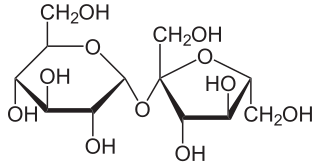
Sucrose, a disaccharide, is a sugar composed of glucose and fructose subunits. It is produced naturally in plants and is the main constituent of white sugar. It has the molecular formula C
12H
22O
11.
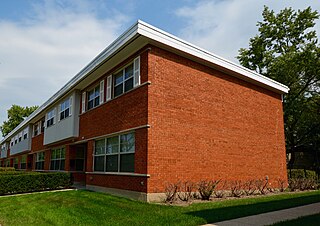
Riverdale is a village in Cook County, Illinois, United States. The population was 10,663 at the 2020 census. The village shares its name with the bordering Riverdale neighborhood in Chicago.

Franz Karl Achard was a German (Prussian) chemist, geoscientist, physicist, and biologist. His principal discovery was the production of sugar from sugar beets.

A refinery is a production facility composed of a group of chemical engineering unit processes and unit operations refining certain materials or converting raw material into products of value.
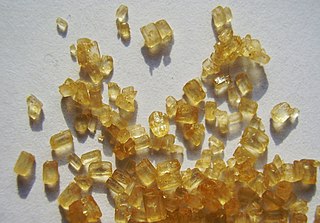
Brown sugar is a sucrose sugar product with a distinctive brown color due to the presence of molasses. It is by tradition an unrefined or partially refined soft sugar consisting of sugar crystals with some residual molasses content, but is now often produced by the addition of molasses to refined white sugar.
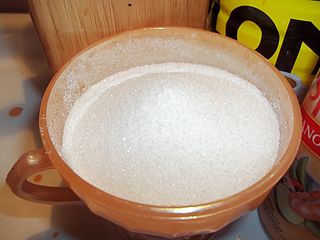
White sugar, also called table sugar, granulated sugar, or regular sugar, is a commonly used type of sugar, made either of beet sugar or cane sugar, which has undergone a refining process. It is nearly pure sucrose.

A sugar refinery is a refinery which processes raw sugar from cane or sugar extracted from beets into white refined sugar.

Golden syrup or light treacle is a thick, amber-coloured form of inverted sugar syrup made by the process of refining sugar cane or sugar beet juice into sugar. It is used in a variety of baking recipes and desserts. It has an appearance and consistency similar to honey, and is often used as a substitute where honey is unavailable.
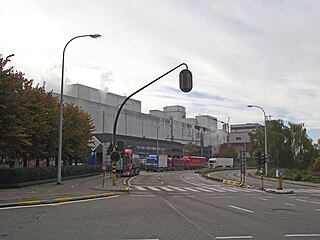
Raffinerie Tirlemontoise, a subsidiary of Raffinerie Tirlemontoise Group, is a Belgian sugar producing company. The company whose headquarters is located in Tienen (Belgium) has four business units: sugar activities, Orafti, Surafti and PPE, which together employ more than 1,800 people.
The Utah-Idaho Sugar Company was a large sugar beet processing company based in Utah. It was owned and controlled by the Church of Jesus Christ of Latter-day Saints and its leaders. It was notable for developing a valuable cash crop and processing facilities that was important to the economy of Utah and surrounding states. It was part of the Sugar Trust, and subject to antitrust investigations by the U.S. Department of Justice, the Federal Trade Commission, and the Hardwick Committee.

Rogers Sugar Inc. is the Canadian holding company of Lantic Inc., which was established in June 2008 after the merger of Lantic Sugar Limited operating in Montreal, QC and Rogers Sugar Ltd.. It is the largest refined sugar distributor in Canada. Established as Rogers Sugar Income Fund in October 1997, the income trust was converted to a regular corporation named Rogers Sugar Inc. in January 2011.
Karkhaneh-ye Qand-e Shirvan is a village in Ziarat Rural District, in the Central District of Shirvan County, North Khorasan Province, Iran. At the 2006 census, its population was 406, in 89 families. This factory was started to be built in the years before the Islamic revolution and after it was built, it had a production capacity of one thousand tons. It has continued to produce sugar in the 40s with an increased capacity of four thousand tons per day. Most of the parts of this factory were before The Islamic revolution is from Germany and Poland. After the revolution, the Shirvan sugar factory continued its production and daily delivery of 3,500 tons of beet sugar in the fall and a little in the spring, and the refining of cane sugar in the year provided a little of Iran's sugar. he does.
Jacob Stepanovich Esipov was a Russian inventor. In 1799-1801 he developed a technology for obtaining sugar from sugar beets under industrial conditions in Russia.
The sugar industry of the United States produces sugarcane and sugar beets, operates sugar refineries, and produces and markets refined sugars, sugar-sweetened goods, and other products. The United States is among the world's largest sugar producers. Unlike most other sugar producing countries, the United States has both large and well-developed sugarcane and sugar beet industries. Refined sugarcane, processed sugar beet, and high-fructose corn syrup are all commonly used in the U.S. as added sugars to sweeten food and beverages.

A beet sugar factory, or sugar factory, is a type of production facility that produces sugar from sugar beets. Nowadays, most sugar factories also act as a sugar refinery. The first beet sugar factory was built in 1802.

The Wester Suikerraffinaderij or Wester Sugar Refinery, was a major sugar refinery in Amsterdam founded by the company Wester Suiker-Raffinaderij N.V. The sugar refinery became part of the Centrale Suiker Maatschappij (CSM) in 1919 and was closed down in 1965. The public company Wester Suikerraffinaderij N.V., which held shares in CSM, survived into the 1990s.

The Waterloo sugar factory is a former sugar factory in Waterloo, in the south of the former Province of Brabant in Belgium. The building was a sugar factory from 1836 to 1871. Later it was used by a dairy company. The industrial area is now known as Waterloo Office Park.
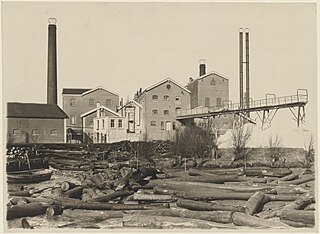
Dordrecht Sugar Factory was an early Dutch beet sugar factory, built in 1861. It closed down in 1909 and has since been completely demolished.